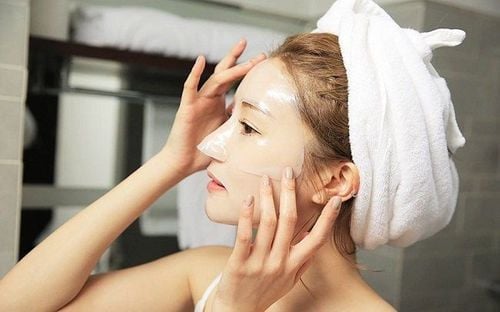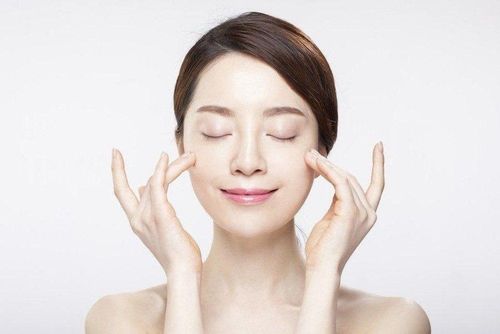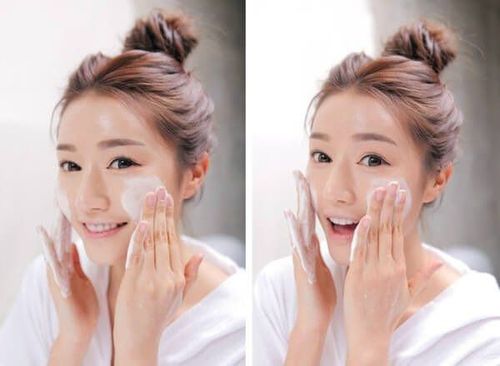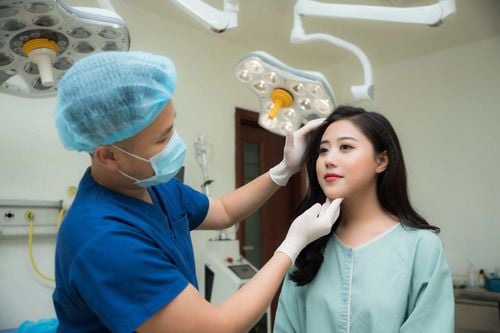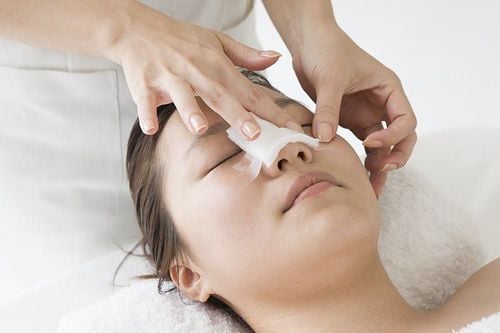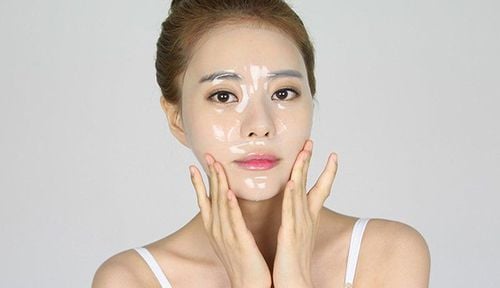This is an automatically translated article.
People have used clay for centuries to improve skin and hair health. Clay masks are made up of one of several types of clay such as kaolin or bentonite. These masks are thought to have a number of benefits, helping to absorb excess oil, control dry skin, and prevent breakouts.
1. Is the clay mask any good?
Clay masks are often used to treat acne. Clay masks have the ability to absorb oil from your skin and prevent mild forms of acne like pimples, blackheads, and whiteheads. These types of acne form when pores become clogged with dirt and excess oil.
To treat blackheads, acne or other acne, you should apply a mixture of clay powder and warm water. The heat helps to increase perspiration, leading to the release of oil and dirt on the skin.
For more severe cystic acne, you should talk to your doctor about the best treatment option. Clay masks won't hit the other root cause of breakouts, possibly hormones.
In addition, the clay mask also works to unclog pores and treat oily skin. Apply a clay mask on your face to help draw excess oil out of your pores. Many people claim green clay is the best for drying your skin. If you have naturally oily skin, regularly applying a clay mask once or twice a week can help control excess oil.
Treatment of dermatitis, psoriasis, eczema and rosacea is another benefit of clay masks. According to a 2017 review of studies, a lotion containing a form of bentonite clay called bentonite quaternium-18 was able to reduce symptoms of poison ivy and oak toxin dermatitis. Applying bentonite to diaper rash has also been shown to be more effective than traditional treatments.
There aren't any studies looking at clay masks as a treatment for other skin disorders like psoriasis, rosacea, and eczema. However, many people claim that clay masks help them control symptoms. A few small studies have found that bentonite clay can help treat sores and cuts. Animal studies show that clay masks can promote the production of collagen fibers, which can reduce wrinkles and increase skin firmness.
Clay masks have the ability to detoxify the skin. Clay usually has a negative charge. Research shows that this negative charge can help it bind to positively charged toxins and heavy metals like mercury and lead found in polluted environments.
2. Clay mask for dry skin
Red clay is the recommended clay for dry skin. According to a 2016 study, when clay hardens, it creates a film that can help your skin retain moisture.
However, researchers found that short-term use of clay masks did not lead to any significant change in skin firmness.
Overuse of clay masks is also likely to dry out your skin. If you already have naturally dry skin, you can limit the use of a clay mask, to a maximum of just once per week.
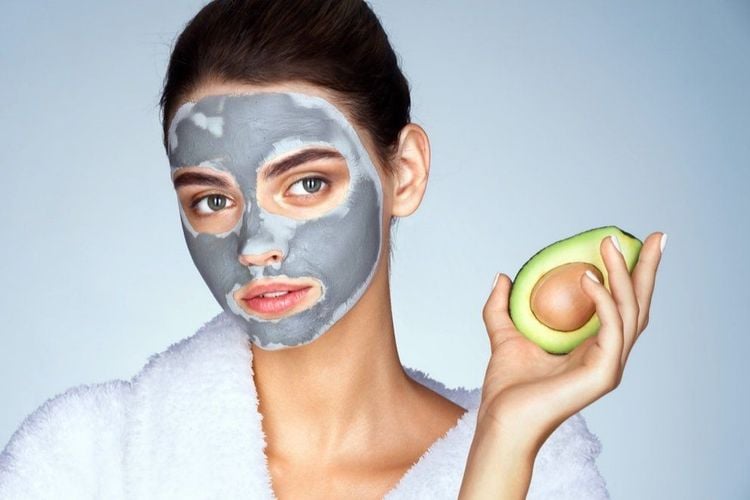
Đất sét đỏ là loại đất sét được khuyên dùng cho da khô
3. Benefits of Bentonite Clay Mask
Bentonite is a clay derived from volcanic ash. It is named after Fort Benton, Wyoming, where large quantities of this clay were discovered.
Many studies examining the potential benefits of clay masks have used bentonite clay in their research. Some of the effects of bentonite on your skin include:
Adjust moisture to the skin; Protect your skin from toxins; Helps reduce acne; Improve the symptoms of dermatitis; Improve symptoms of diaper rash.
4. Benefits of using a clay mask for hair
Most of the evidence supporting the use of clay for hair health is equivocal. Although more research is needed, some people claim that clay can draw dirt and oil from the scalp to improve hair health.
Clay masks can help with dandruff and repair dry and heat-damaged hair. Some people claim that clay can help your hair grow faster. However, this is a "myth", stemming from the results of a 1992 study. It is believed that feeding bentonite to sheep improved their wool production. There is no evidence that clay increases hair growth in humans.
5. Potential side effects and precautions when using clay masks
Usually, you will not experience serious side effects after applying a clay mask to your skin.
If you leave the clay mask on for too long or use the clay mask too often, your skin may become dry or irritated. You should limit the use of this treatment to no more than 2 times per week.
Some clay masks may contain other substances that can irritate the skin, such as glycolic acid.
The most likely side effects of using clay masks include:
Dry skin; Itchy; Redness of the skin; Rash.
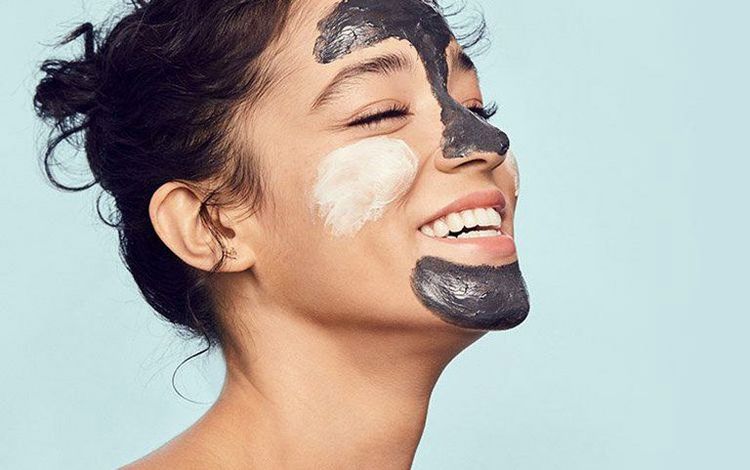
Bạn sẽ không gặp phải các tác dụng phụ nghiêm trọng sau khi đắp mặt nạ đất sét lên da
6. How to use a clay mask
Here are some reference ways you can apply a basic green clay mask:
Scoop a quarter amount of clay from its container; Apply the clay evenly on the face. Start from your upper neck and apply evenly upward; Leave it on for about 15 minutes; Rinse face with warm water to remove the mask. In a nutshell, clay masks have been used for hundreds of years to improve skin health. Modern science has found that clay masks can have a number of benefits for your skin such as absorbing excess oil and preventing breakouts. Anecdotal evidence suggests that clay masks for hair may also be beneficial. If you've tried clay masks, be sure to limit them to 2 times a week. Many dermatologists recommend doing so because overuse can dry out the skin.
Please dial HOTLINE for more information or register for an appointment HERE. Download MyVinmec app to make appointments faster and to manage your bookings easily.
Reference source: healthline.com



